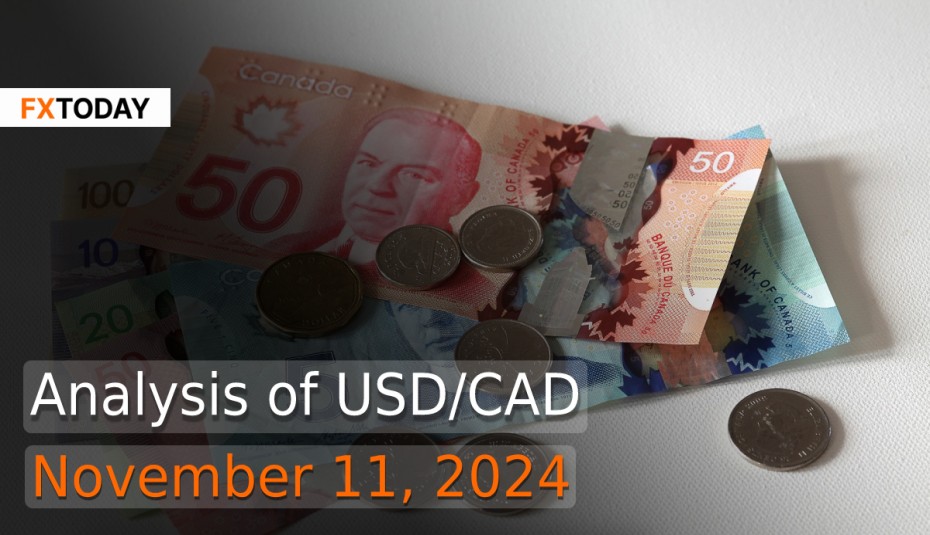Bank of Canada Slashes Rate by 50 Basis Points, Balancing Inflation Control with Economic Growth
The Bank of Canada (BoC) has embarked on a bold monetary easing path, lowering its policy rate by 50 basis points to 3.75% in October, a move that reflects a complex economic balancing act. This larger-than-typical cut—the first of its size in over four years—signaled BoC’s near-certainty that inflationary pressures would continue to moderate, allowing for a less restrictive approach.
Despite considering a smaller reduction, the BoC's governing council opted for the 50 basis point cut, recognizing that both the labor market’s slack and the need for stronger growth warranted decisive action. Nonetheless, there was internal caution that such a large reduction could create public expectations for more aggressive rate cuts or raise concerns about deeper economic weakness.
Canada’s economic environment presents challenges that complicate this easing strategy. While inflation has moderated to 1.6%, and economic slack persists, the country’s labor market remains under strain. Despite immigration-driven labor force growth (reaching a record 7% of the population), October’s job creation fell short of expectations, and the unemployment rate remained at a 34-month high of 6.5%. Even with improved job additions, part-time roles continue to contract, and wage growth, which ticked up to 4.9% annually for permanent employees, signals a need for cautious rate cuts ahead as it risks fueling further inflation.
The BoC also faces structural issues in housing affordability, exacerbated by Canada’s unique mortgage structure of short-term, renewable fixed rates. As nearly 60% of mortgages come up for renewal over the next two years, many households will face increased payments, regardless of recent rate cuts. Senior Deputy Governor Carolyn Rogers emphasized that housing solutions require a balanced approach to supply and demand rather than simply altering mortgage structures, despite some suggestions that the U.S.-style 30-year fixed rate could help ease volatility in homeowner costs.
In the backdrop, Canada’s trade sector has struggled, posting a wider-than-expected deficit of C$1.26 billion in September. While export volumes increased, lower global commodity prices, especially for oil and metals, pulled down export values. Analysts note, however, that stronger export volumes signal some momentum heading into the fourth quarter, despite high interest rates throttling local demand and impacting growth projections.
As Canada’s services and manufacturing sectors show tentative signs of recovery—both sectors crossed the 50-point PMI threshold for the first time in months—the BoC’s easing measures are providing a mild lift to business sentiment. Yet, persistent high input costs keep inflation risks in check, requiring the BoC to carefully balance further cuts. Investors are eyeing the BoC’s December decision, with expectations hovering around another 50 basis point cut. This next move will hinge heavily on forthcoming data, including jobs, inflation, and GDP, as the central bank navigates a narrow path between fostering growth and avoiding overheating an already fragile economy.
The U.S. dollar opened cautiously on Monday as markets anticipated key inflation data and comments from multiple Federal Reserve officials this week. Analysts expect Trump's policies to increase inflation and bond yields, which could restrict the Fed's flexibility in easing rates. JPMorgan’s analyst predicts another 25-basis point rate cut in December, with a slower pace of cuts going forward, now expecting a terminal rate of 3.5%.
Meanwhile, U.S. consumer sentiment hit a seven-month high in early November, with future expectations particularly optimistic among Republicans. A series of speeches from Fed officials, including Chair Jerome Powell on Thursday, will provide more insights into the rate outlook. Additionally, Thursday’s U.S. inflation data will be closely watched; a core consumer price reading above the expected 0.3% could diminish the likelihood of a December rate cut, supporting the dollar in the long term. This may result in the Canadian dollar fluctuating within its current range, with a slight potential to reach the upper boundary. However, it is expected to continue weakening against the U.S. dollar during this period.
Data for Technical Analysis (1H) CFD USD/CAD
Resistance : 1.3920, 1.3922, 1.3926
Support : 1.3914, 1.3912, 1.3908
1H Outlook
Source: TradingView
Buy/Long 1 If the support at the price range 1.3908 - 1.3914 is touched, but the support at 1.3914 cannot be broken, the TP may be set around 1.3922 and the SL around 1.3905, or up to the risk appetite.
Buy/Long 2 If the resistance can be broken at the price range of 1.3920 - 1.3926, TP may be set around 1.3932 and SL around 1.3911, or up to the risk appetite.
Sell/Short 1 If the resistance at the price range 1.3920 - 1.3926 is touched, but the resistance 1.3920 cannot be broken, the TP may be set around 1.3913 and the SL around 1.3929, or up to the risk appetite.
Sell/Short 2 If the support can be broken at the price range of 1.3908 - 1.3914, TP may be set around 1.3900 and SL around 1.3923, or up to the risk appetite.
Pivot Points Nov 11, 2024 03:02AM GMT
|
Name
|
S3
|
S2
|
S1
|
Pivot Points
|
R1
|
R2
|
R3
|
|---|---|---|---|---|---|---|---|
| Classic | 1.3905 | 1.3908 | 1.3913 | 1.3917 | 1.3922 | 1.3926 | 1.3931 |
| Fibonacci | 1.3908 | 1.3912 | 1.3914 | 1.3917 | 1.392 | 1.3922 | 1.3926 |
| Camarilla | 1.3915 | 1.3916 | 1.3917 | 1.3917 | 1.3918 | 1.3919 | 1.392 |
| Woodie's | 1.3905 | 1.3908 | 1.3913 | 1.3917 | 1.3922 | 1.3926 | 1.3931 |
| DeMark's | - | - | 1.3914 | 1.3918 | 1.3923 | - | - |
Sources: Investing 1, Investing 2
















